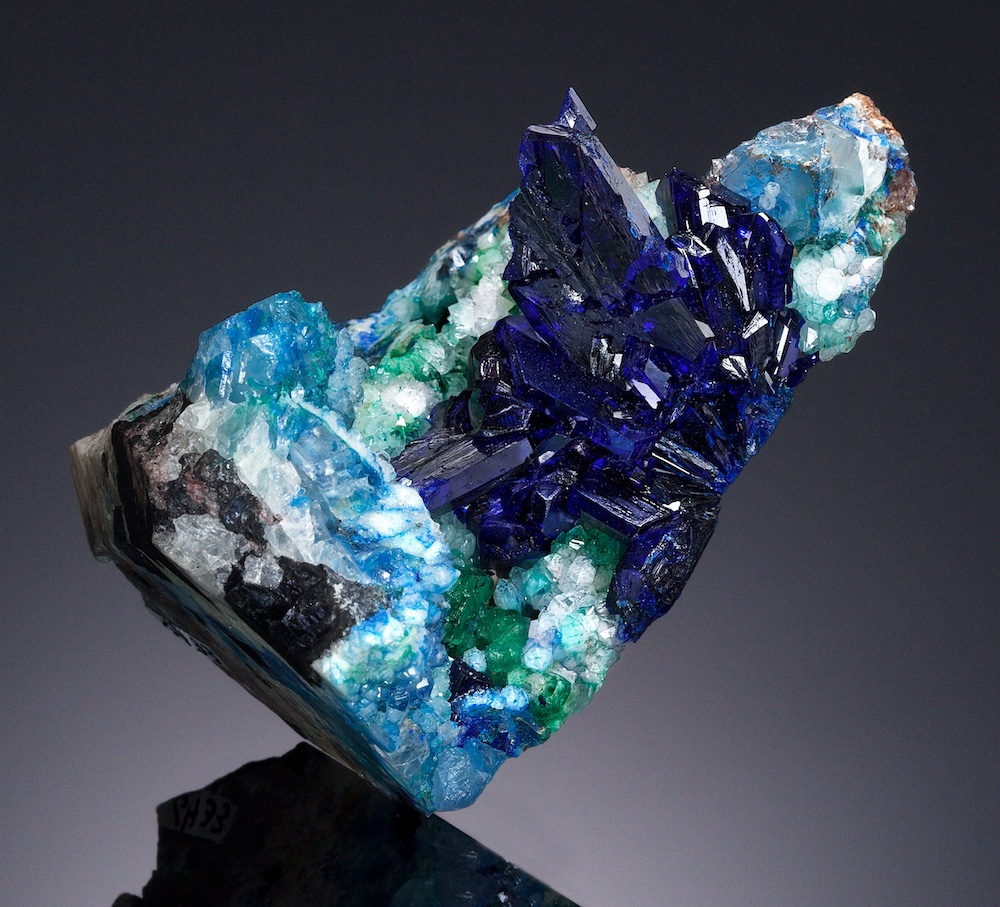Color of Money: Sparkling Blue Mineral May Sell for $100K

Collectors prize the copper mineral linarite for its intense blue color, but specimens with crystals large enough to truly show off this hue are rare.
Linarite, which also contains lead, typically shows up in the form of microcrystals, "little sparkling blue things that coat other stuff," said Jim Walker, a director of the nature and science department at the auction house Heritage Auctions. "You don't really get any idea what the crystal form is, because their sizes are fractions of a millimeter."
As part of a public minerals auction scheduled for June 2, Heritage is offering a specimen containing a 1-inch-long (2.5 centimeters) crystal. This blue behemoth, found in a New Mexico mine in 1979, is the largest crystal ever offered for sale publicly, Walker said. It is unclear if a larger specimen exists.
The opening bid is set at $15,000, but it is conceivable this specimen could fetch more than $100,000 at auction, Walker said. Though a hefty sum, this potential price would not come close to topping the charts for mineral specimen sales, which have reached into the millions. [See Images of Dazzling Mineral Gems]
Like fine art
Unlike gems, mineral specimens remain uncut and unpolished after they are removed from the ground. And whereas gems are assigned a value per carat (a unit of weight), mineral specimens are assessed much like works of art. In both the art world and the mineral world, experts rely on their own knowledge to assess the qualities of an item and compare it with similar ones, in order to nail down a monetary value, Walker said.
For minerals, the size, aesthetic composition, color, luster (how its surfaces reflect light) and lack of damage are all important factors.
Sign up for the Live Science daily newsletter now
Get the world’s most fascinating discoveries delivered straight to your inbox.
As with paintings, the prospect of future pieces entering the market also affects the value. A specimen from a mine that has been closed after its ore is exhausted gains value, just like a work by an artist, such as Pablo Picasso, who is no longer alive to produce more work.
For this particular specimen of linarite, the crystals' large size, deep-blue color and semimetallic sheen contribute to its value. Also important is the specimen's aesthetic composition, with blue- and green-tinted quartz crystals surrounding the linarite crystals, and the lack of damage.
Aside from the find in 1979, all linarite crystals from this particular mine, the Blanchard Mine, have been relatively small specimens, Walker said.
The history
This piece also comes with a story: In December 1979, a group of geology students arrived in the mine.
"They were doing what sometimes geology students do, which is go to mines that they are not supposed to be in, without permission, and doing what is referred to as midnight collecting," Walker said. "In this case, the ones that originally found [this linarite specimen] were apprehended by the owners along with the local sheriff, who hustled them off to the local pokey."
The auction house isn't certain how this particular specimen ended up in the hands of a dealer, but Walker has heard anecdotally that a second group of midnight miners arrived later the same evening and removed it from Blanchard Mine. He noted that some mythology tends to develop around the discovery of valuable specimens.
However entertaining this story may be, it has little effect on the value of the specimen compared with another piece of its history: In 1980, the specimen was sold to Miguel Romero, a Mexican industrialist and senator, who assembled the finest mineral collection in Mexico. It then passed through owners. If a specimen was part of a renowned collection, such as Romero’s, it is considered more valuable, Walker said.
The linarite specimen is among more than 50 specimens going up for auction. These include branching gold crystals, wiry silver, brilliant yellow sulfur, rodlike aquamarine and a specimen called the "snow angel."
Follow LiveScience on Twitter @livescience. We're also on Facebook & Google+. Original story on LiveScience.com.










